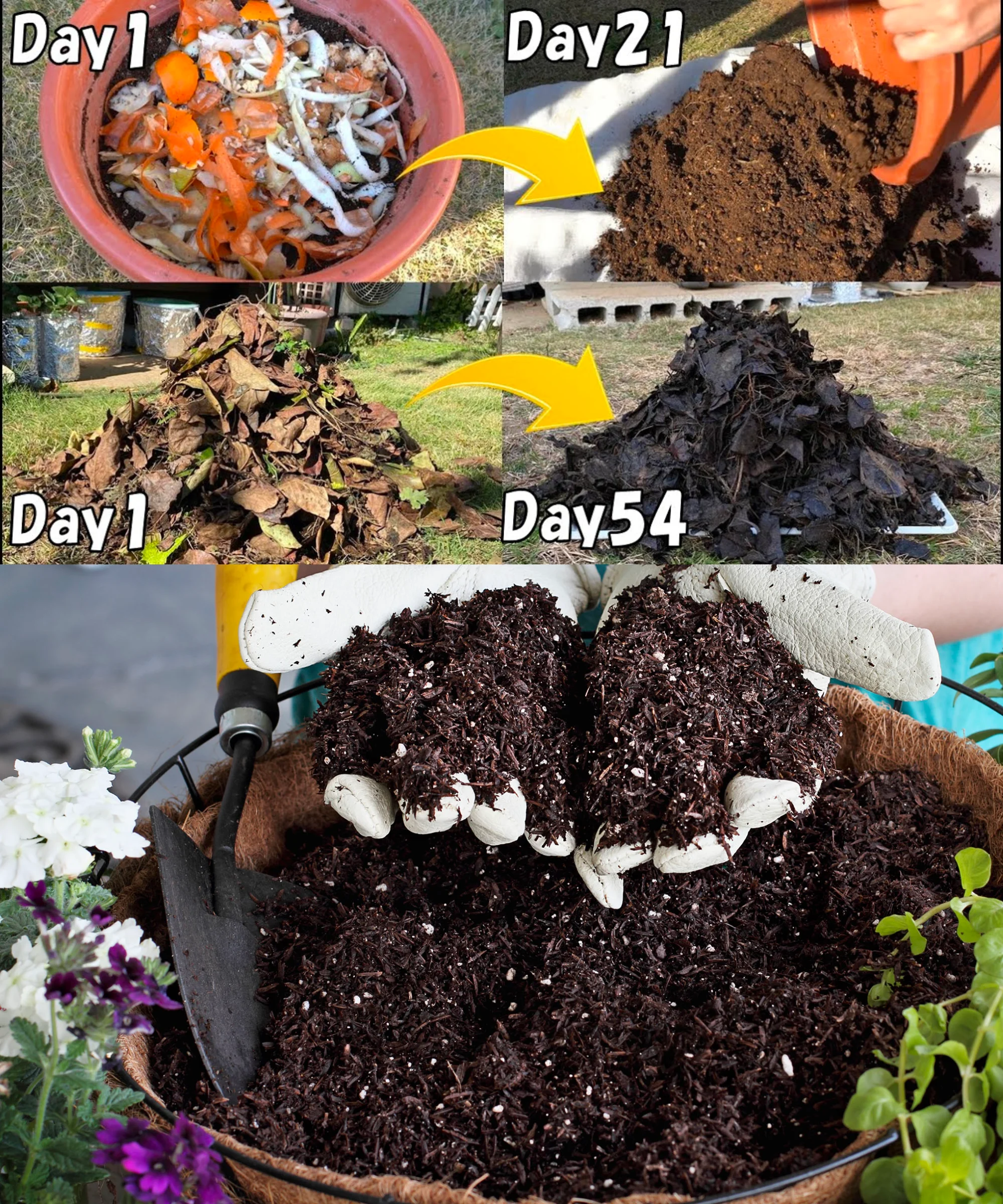You can even add dead flowers, but avoid shells, salt, and oily food residues.
Ensure proper drainage by elevating the container and placing it in a rain-free area.
Chapter 2: Crafting Foolproof Leaf Mold
Creating leaf mold is a fantastic way to utilize fallen leaves without discarding them. Here’s how:
Collect Fallen Leaves:
Gather fallen leaves into a bag.
Layering and Conditioning:
Spread rice bran thinly over the dead leaves.
Optionally, add carus nc-r, a soil conditioner, to expedite leaf decomposition.
Continue layering dead leaves, rice bran, and carus nc-r until the bag is full.
Aerating and Moistening:
Create several holes at the bag’s bottom.
Add ample water until it drains from the bag’s base.
Sprinkle rice bran and soil conditioner on top of the wet leaves.
Sun Exposure:
Securely tie the bag and place it in a sunny spot.
Periodic Mixing:
After a few days, stir the leaves to moisten them.
When all leaves are evenly wet, tie the bag again.
Temperature Control:
Monitor the bag’s temperature; it should reach 41°C for proper fermentation.
Promoting Decomposition:
By placing weights on top and keeping the leaves close, you expedite the decomposition process.
Regular Aeration:
Stir the leaves weekly.
Over time, the dead leaves will turn entirely black.
Completion:
After less than two months, your leaf mold will be ready.
Transfer it to a final container.
Conclusion: By following these eco-conscious practices, you can effectively reuse old soil and create high-quality leaf mold for your garden. These techniques not only reduce waste but also contribute to soil health and plant growth. Happy gardening and eco-friendly composting!
ADVERTISEMENT
